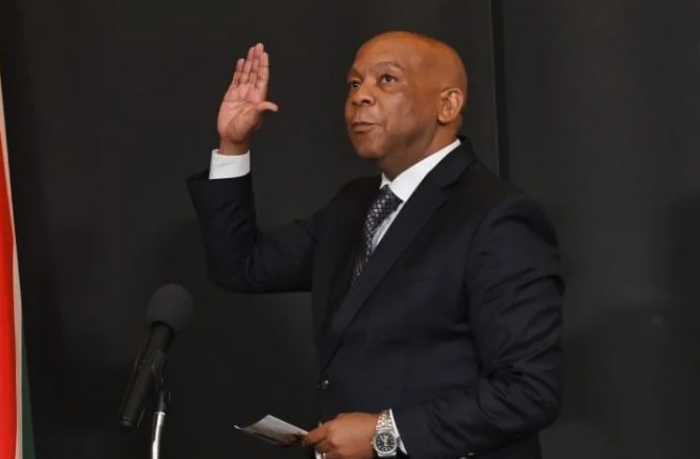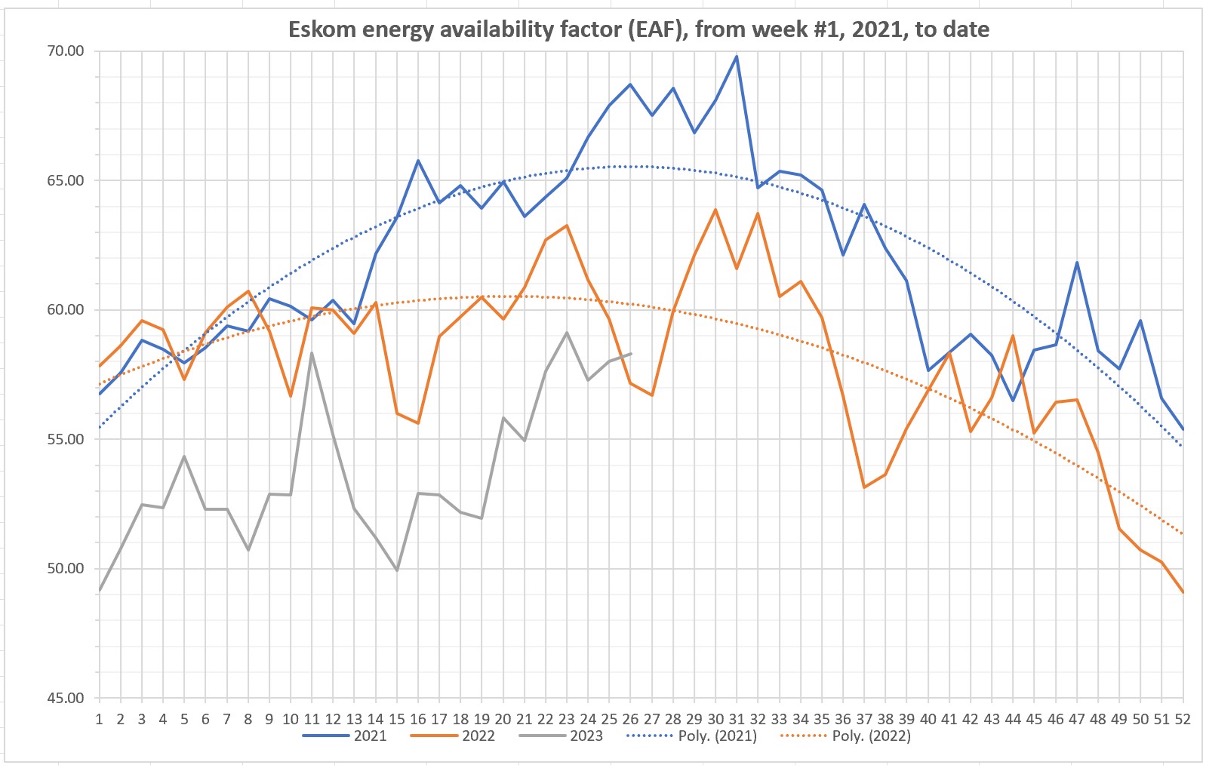- Outlining the generation performance for period 3 -7 July 2023 yesterday, South Africa’s Minister in the Presidency responsible for Electricity, Dr Kgosientsho Ramokgopa, announced that the country’s state owned and state run energy utility, Eskom, has been able to maintain the increased energy availability of more than 60% resulting in lower levels of load shedding. Read more
“The progress we’re making is tribute to the fact that we’ve stayed the course. We’ve received a number of criticism, arguing that government doesn’t have a plan and our consistent message was that we have a plan and we are going to deliver against that plan. We have been able to maintain the trend line, we are approximating that 60% energy availability factor. In megawatts terms, you can see the running average for the week is about 28 272,” Ramokgopa said.
While the drop in loadshedding levels are welcome by all South Africans, Ramokgopa statements are being met with scepticism.
In late May this year, during a State of the System and Winter Outlook briefing, Eskom cautioned that the power system is severely constrained and there is a high risk of elevated stages of loadshedding in winter. At the briefing, Eskom Group Executive for Transmission, Segomoco Scheppers, cautioned that losses of 18000MW or more during the winter period could result in the implementation of loadshedding up to Stage 8. Read more
Eskom is currently pivoting between stage 1 and 3 blackouts (up to 3 to 4 hours every 24 hours) on a daily basis largely due to a drop in energy demand as the private sector is increasingly investing in own generation capacity.
In a statement on the Cabinet Meeting of 5 July 2023, the South African government welcomed the improvement in Eskom’s Energy Availability Factor, which is now closer to 70%, they said.
In reality, Eskom’s’ week-on-week energy availability factor (EAF) reports that it is nowhere near 70% or 60%. According to Eskom’s own EAF reports, they achieved 58.31% for Week 26, 2023, with year-to-date EAF of 53.77% (down from 59.35% for same period in 2022). This has been verified by respected energy analyst, Chris Yelland.
Image credit: Eskom
Eskom’s twitter account reports the following:
Eskom’s most recent loadshedding press release states that breakdowns increased to 15 100MW of generating capacity while the generating capacity out of service for planned maintenance slightly increased to 5 252MW. Over the past 24 hours, a generating unit at Arnot Power Station was returned to service. In the same period, a generation unit at Matimba Power Station was taken out of service due to a breakdown. The delay in returning to service two generating units at Tutuka Power Station is contributing to the current capacity constraints.
Ramokgopa said the month of July is a special one because it marks the anniversary of the Energy Action Plan which was introduced by President Cyril Ramaphosa.
The minister said the plan has made progress as they have been able to mobilise private sector players.
“In relation to the Energy Action Plan, we have been able to mobilise private sector players, over a hundred of them are working with us and that in part is to help us recover the units but also to ensure that they are able to transmit the knowledge and exchange it with some of the station managers and junior engineers so that they are able to run on their own.
“When we come out of this very difficult electricity situation, we will be more than confident that we have cadres of young engineers at Eskom, who fully understand how these machines operate,” he said.
Read more on South Africa’s electricity minister’s announcements since his appointment HERE
Author: Bryan Groenendaal

















